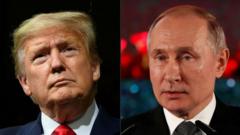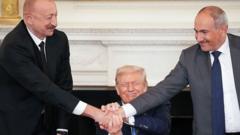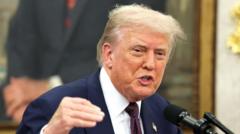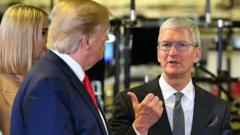In a decision that highlights ongoing economic challenges, the Federal Reserve announced today that it will maintain its key interest rate at 4.3%, unchanged since December. This marks the fourth consecutive time the central bank has opted to hold rates steady, despite a backdrop of slowing growth and rising inflation expectations. Key indicators suggest a potential downturn, with policy-makers now predicting economic growth to slow to 1.4% this year and unemployment to rise to 4.5%. Inflation, currently above the Fed's 2% target at 2.4%, presents an ongoing concern, as President Trump continues to urge the Fed to lower rates. Officials are exercising caution, asserting their independence and waiting for more data on economic conditions before making further adjustments.
Fed Maintains Interest Rates Amid Economic Uncertainty
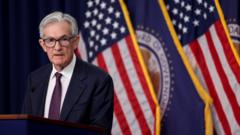
Fed Maintains Interest Rates Amid Economic Uncertainty
US Federal Reserve keeps interest rates steady for fourth consecutive time as economic forecasts worsen.
The Federal Reserve's decision to hold interest rates steady comes at a time when the US economy is navigating through swirling policy changes and rising economic pressures. On Wednesday, the Fed confirmed that its benchmark lending rate will continue to remain at 4.3%, the level it has held since December of last year.
This is the fourth consecutive meeting in which the central bank has chosen not to alter borrowing costs. Recently, Fed officials have expressed concerns over deteriorating economic forecasts, with predictions indicating a decline in GDP growth from earlier estimates of 1.7% to just 1.4% for this year. Additionally, there are calls for caution as inflation rates are anticipated to climb to around 3%, up from the previously projected 2.7%. Furthermore, unemployment rates are now expected to reach 4.5%, a sign of potential labor market weaknesses ahead.
Despite the uncertain economic landscape, Federal Reserve officials maintain that the economy remains "solid." However, they emphasize that further data—particularly around the impact of tariffs—will be crucial in shaping future rate decisions. President Trump has been vocal about his desire for the Fed to cut rates, criticizing Fed Chair Jerome Powell while arguing that such action could stimulate the economy again. Nevertheless, the central bank remains committed to its principle of data-driven decision-making and its independence from political pressures.
Analysts like Isaac Stell from Wealth Club note that the Fed is likely to adopt a measured approach, refraining from decisions unless warranted by substantial evidence. The steady rate is reflective of historical trends, standing notably higher than the near-zero rates maintained from 2008 to 2022, although lower than rates seen last year.
As the Federal Reserve navigates these economic complexities, its decisions will be pivotal in influencing borrowing costs for households and businesses across the nation, thereby impacting various sectors from mortgage lending to consumer loans. With the current climate of uncertainty, all eyes will remain on the central bank's next steps.
This is the fourth consecutive meeting in which the central bank has chosen not to alter borrowing costs. Recently, Fed officials have expressed concerns over deteriorating economic forecasts, with predictions indicating a decline in GDP growth from earlier estimates of 1.7% to just 1.4% for this year. Additionally, there are calls for caution as inflation rates are anticipated to climb to around 3%, up from the previously projected 2.7%. Furthermore, unemployment rates are now expected to reach 4.5%, a sign of potential labor market weaknesses ahead.
Despite the uncertain economic landscape, Federal Reserve officials maintain that the economy remains "solid." However, they emphasize that further data—particularly around the impact of tariffs—will be crucial in shaping future rate decisions. President Trump has been vocal about his desire for the Fed to cut rates, criticizing Fed Chair Jerome Powell while arguing that such action could stimulate the economy again. Nevertheless, the central bank remains committed to its principle of data-driven decision-making and its independence from political pressures.
Analysts like Isaac Stell from Wealth Club note that the Fed is likely to adopt a measured approach, refraining from decisions unless warranted by substantial evidence. The steady rate is reflective of historical trends, standing notably higher than the near-zero rates maintained from 2008 to 2022, although lower than rates seen last year.
As the Federal Reserve navigates these economic complexities, its decisions will be pivotal in influencing borrowing costs for households and businesses across the nation, thereby impacting various sectors from mortgage lending to consumer loans. With the current climate of uncertainty, all eyes will remain on the central bank's next steps.


